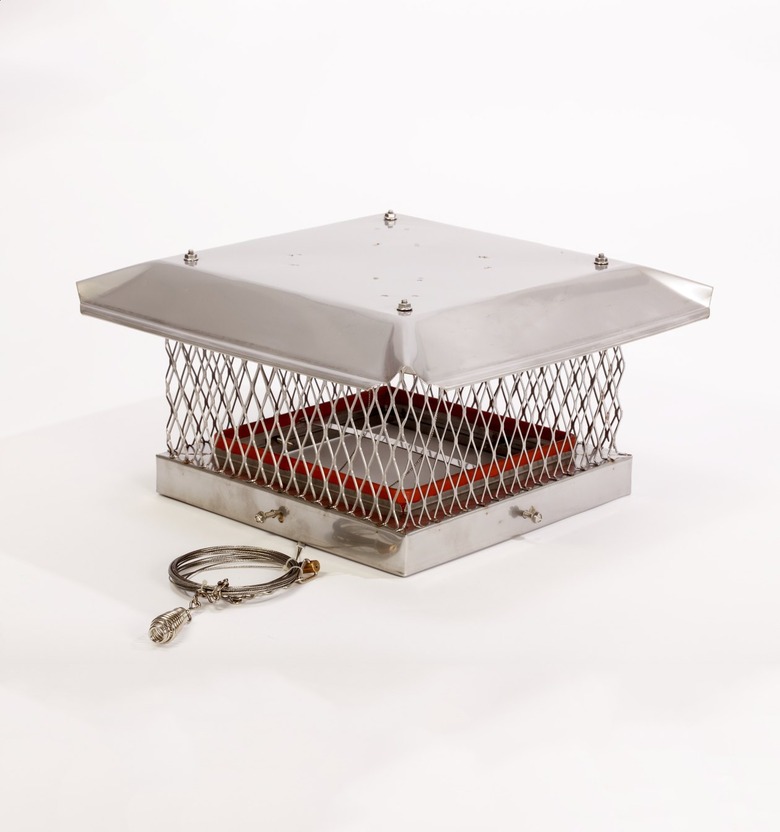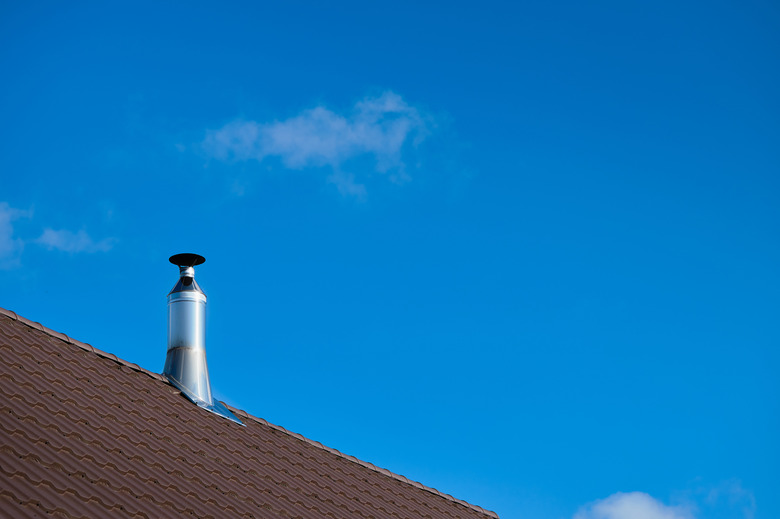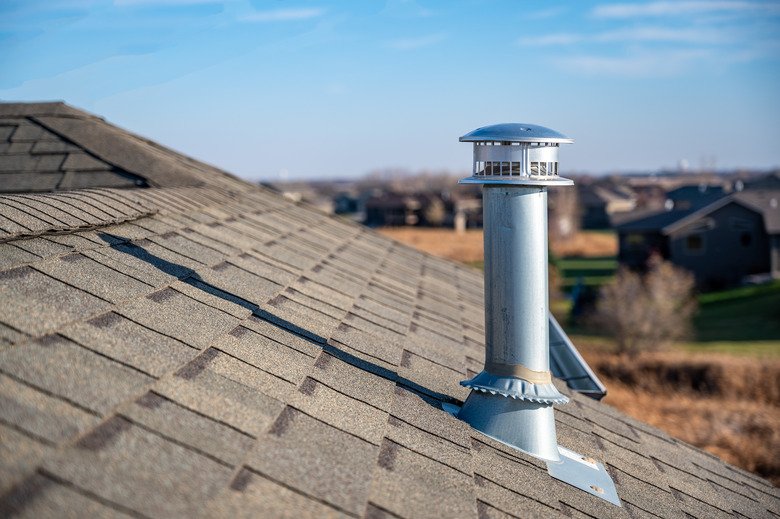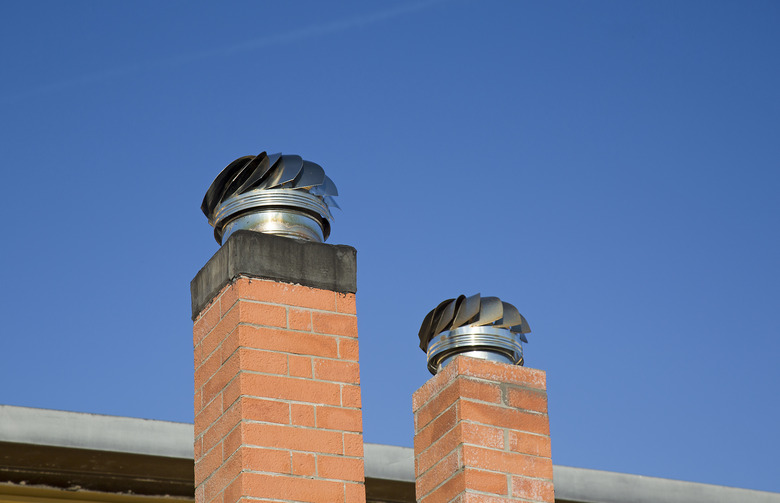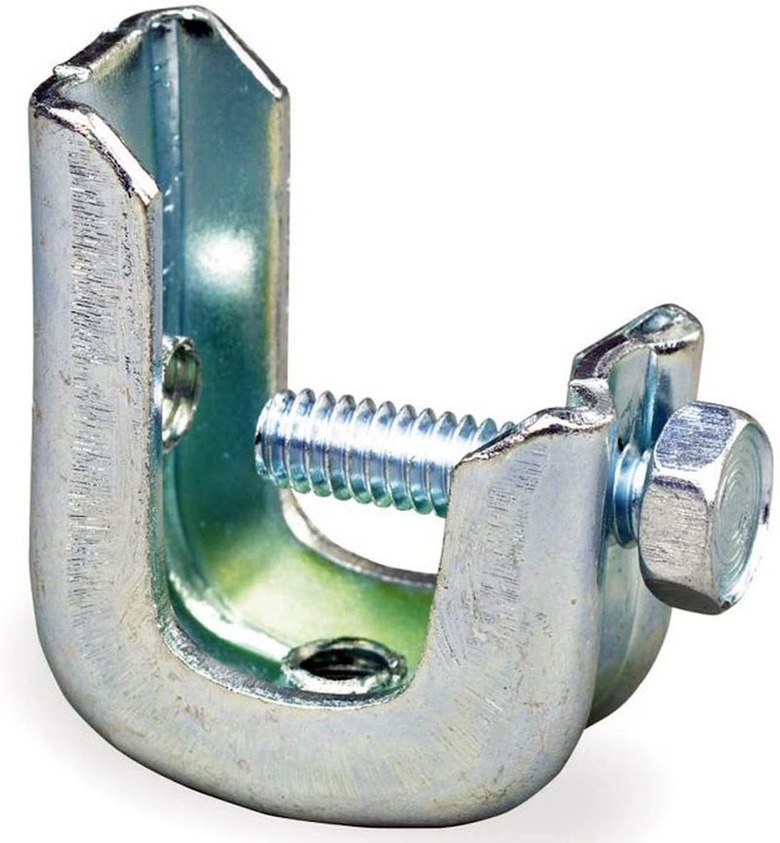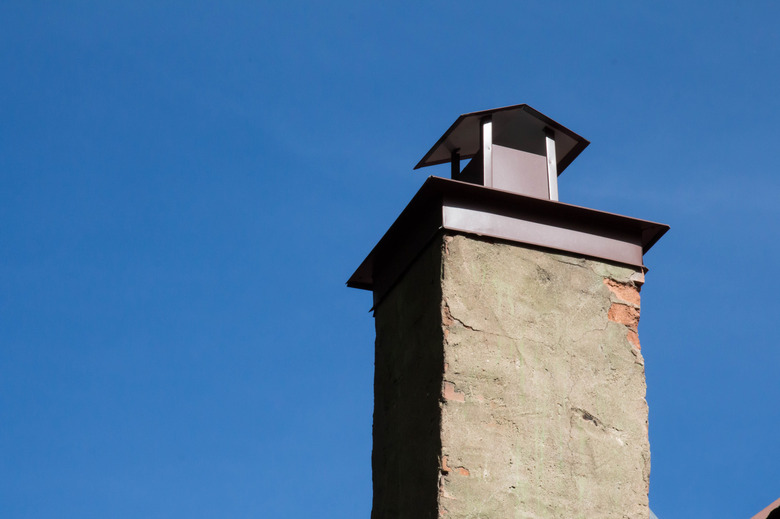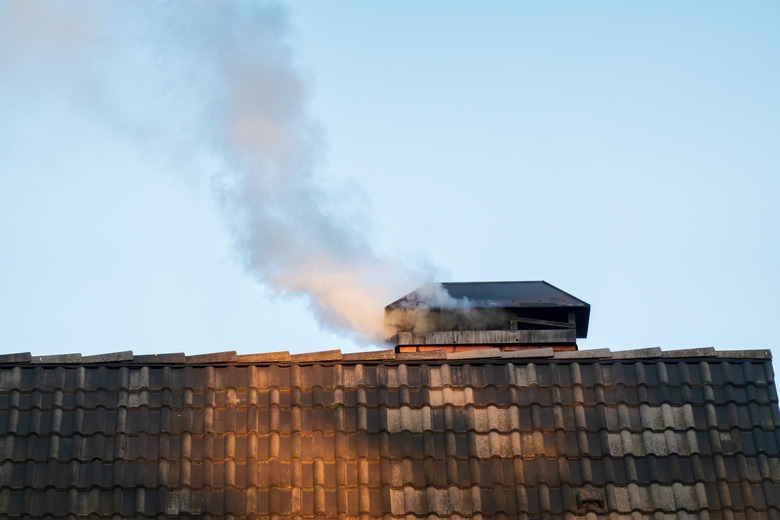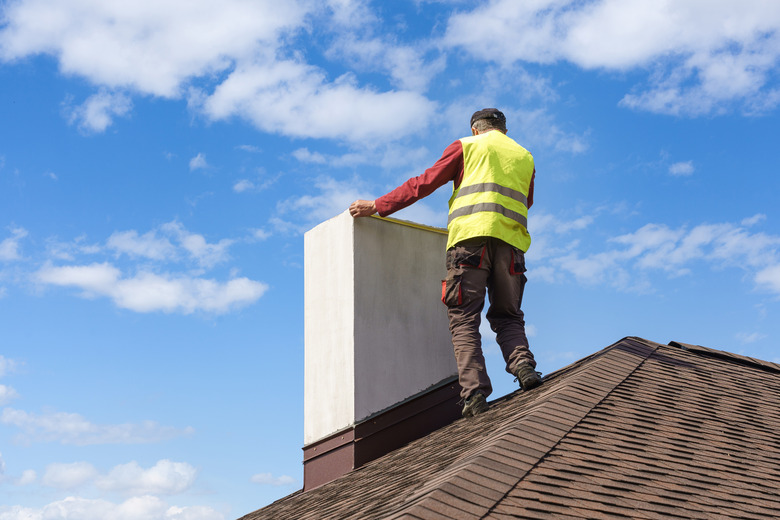What Is A Fireplace Damper? Here's What To Know
We may receive a commission on purchases made from links.
If you have a fireplace or wood stove in your home, you would be quite the rarity if you didn't also have a fireplace damper. You might also be running afoul of the local building codes, most of which require a damper in the fireplace. A damper is a simple yet important device that regulates the airflow in your chimney and allows you to safely vent your fireplace without inviting critters and drafts into your home.
What Is a Fireplace Damper?
What Is a Fireplace Damper?
In order to understand what a fireplace damper is, you must first understand what constitutes the flue. When lighting a fire, people often talk about opening the chimney flue, but what they really mean is that they're going to open the damper. Although often misnamed, the flue is actually a ceramic or metal air shaft or chase that lines the inside of the chimney.
The chimney damper is a metal plate that sits inside or on top of the flue. When closed, it blocks drafts from entering your home while preventing the heated or cold air in your house from escaping up through the chimney. It also keeps critters, like squirrels or raccoons, from crawling down the chimney and into your fireplace. You must open the damper when you use the fireplace to allow the smoke and fumes from combustion to travel up and out of the chimney. Although you can adjust some dampers once your fire gets going, never, ever start a fire in your fireplace unless the damper is fully open.
Is It Open?
Is It Open?
Now that you know the damper must always be open before you start a fire, you're likely wondering how to tell if it is. Most of the time, you'll know because you'll physically open it when you get ready to use the fireplace. If you're not sure, however, there are a few ways to check. One is to simply lean into the fireplace and look up. If you see daylight at the top of the chimney, the damper is open.
If sticking your head into a dirty, sooty fireplace doesn't appeal to you, you can also just stick your hands in with a flashlight and a mirror. If the damper's open, you'll also feel a draft on your hands. Still not sure? Light a long fireplace match or a rolled-up newspaper and hold it under the chimney. If the smoke travels upward into the chimney, the damper is open. If it fills the fireplace or comes back into the room, the damper is probably closed.
Types of Fireplace Dampers
Types of Fireplace Dampers
There are two main types of fireplace dampers: the throat damper and the chimney cap. Throat dampers are so called because they sit down inside the flue, whereas chimney caps, as their name suggests, sit outside of your home and on top of the flue.
One popular style of throat damper is the poker, or vestal damper, which features a curved metal plate and a handle. You push the handle in the fireplace up and away from you to open a poker damper and pull it toward you to close it. It's common to hear a metallic scraping sound when you open this type of damper and a thud when you close it, so don't worry if you hear the damper when you move it.
Very much like the poker damper is the pivot damper. The pivot damper is essentially the same thing, but the handle on the pivot damper is notched. You open the pivot damper and then use the notch in the handle on a metal bar to hold the damper open.
A third type is the rotary damper. While the handles for poker and pivot dampers are often found just under the chimney, you operate rotary dampers with a device on the side of the fireplace. A rotary damper features a pin that resembles a corkscrew. As you turn the handle on the outside of the fireplace, this screw extends and pushes the damper open. Turn it the other way and the screw retracts and closes the damper.
Modern fireplaces with round, metal flues typically have a throat-type damper consisting of a metal disc that rotates by means of a handle or lever located at the front of the fireplace. When the face of the disc is perpendicular to the flue pipe, the damper is closed; when it's parallel to the pipe, the damper is open.
Chimney caps, also known as top-sealing or top-mount dampers, work a little differently than throat dampers. A chimney cap is installed over the top of the fireplace flue and uses springs or weight to keep it in the open position. A long cable extends from the cap down through the flue and into the fireplace. The cable hooks onto a bracket inside the firebox and includes a handle that you grasp to move the cable on or off the bracket to close or open the damper. Once you release the cable from the bracket, the springs on the damper cause the cap to pop up, or the weight on the damper causes it to swing open depending on the damper type.
Some experts prefer chimney caps because they keep debris from entering your flue at all, while throat dampers catch debris after the fact, keeping it out of your house but letting it into the flue. Throat dampers are also less energy efficient because they don't make a tight seal when they close. They will block quite a bit of airflow but not all of it. Chimney caps, however, often feature a silicone seal that makes them airtight when they close.
What Is a Damper Clamp?
What Is a Damper Clamp?
If you have a gas fireplace or a gas log lighter, your local building code likely requires you to have a damper clamp. These inexpensive gadgets are essentially C-clamps that hold your fireplace damper open and lock it in the open position. This is done because burning both natural gas and propane creates a byproduct known as carbon monoxide (CO). This colorless and odorless gas is toxic and can make you sick or even kill you. Locking your fireplace damper in the open position helps ensure that any dangerous CO goes up and out of the chimney rather than building up inside.
Unfortunately, locking your damper in the open position means that you lose the protection from drafts that a closed damper provides. It also allows the heated and cooled air inside your home to escape through your chimney. To counter this problem, it's best to choose a gas fireplace that comes with glass doors that you can close or a fixed glass panel covering the fireplace opening as most direct-vent gas fireplaces have.
Although the damper clamp is a great safety tool, you shouldn't count on it alone. If you have a gas fireplace or other gas appliances in your home, consider installing carbon monoxide detectors. These devices resemble smoke detectors and can literally save your life.
Fireplace Damper Costs
Fireplace Damper Costs
Unless you have a ventless fireplace, you should have a fireplace damper. The exception to this rule is if you have a gas fireplace on which you're required to install a damper clamp. In this case, you can get away with not having a damper, which means the flue is always open for airflow. Otherwise, it's always best to have a damper.
If you don't have a damper for some reason, you should absolutely install one. An entire throat damper system costs about $150 to $200, while the damper plate can be had for as little as $50. A chimney cap damper runs about $290 to $420.
If your DIY game is strong, you can probably replace or install a fireplace damper by yourself to save some money. If you're unsure about the job, however, a professional installation will cost you about $200 to $400 in labor. This may be well worth paying since a pro will likely take the time to clean the fireplace a bit and do a quick check for any problems with the flue.
Common Damper Problems
Common Damper Problems
Fireplace dampers are simple devices that generally don't have a lot of problems. It's possible, however, that you could have trouble opening or closing yours at some point. This is usually due to the damper hopping off its track or debris in the fireplace. Putting the damper back on track is usually a simple fix unless years of heat have warped it. In that case, you'll want to replace it.
In many cases, the damper sticks simply because of debris and dirt in the flue. Soot, leaves, animal nests, and other debris can sometimes inhibit the movement or proper sealing of the damper. Creosote can do the same. Creosote is a byproduct of burning wood that can build up in your flue. It can impede the damper operation and lead to a dangerous chimney fire if not periodically removed.
You can usually avoid all these problems by having your fireplace and flue cleaned at least once a year by a chimney sweep. You may be able to go a bit longer between cleanings if you don't use your fireplace often. If you're struggling with your damper, however, don't wait. The time to have your fireplace checked and cleaned is right now if you're having trouble opening and closing your damper.
Time for an Upgrade
Time for an Upgrade
If it's time for a new damper or if you're looking for better draft protection for your wood-burning fireplace, you can upgrade your old vestal damper by replacing it with a chimney cap. This is a fairly easy DIY project. To begin, you'll want to remove your old vestal damper from the flue. This is a simple matter of removing a few nuts. When they're out, the damper will slide out of the flue.
Measure carefully to make sure you purchase a chimney cap that will fit well. Test fit the new damper to make sure it will seal properly. Next, drop the control cable through the flue. Mount the chimney cap using galvanized steel brackets. When the cap is installed, go inside and mount the operating cable inside the firebox. You'll want to mount the cable bracket in a place that's easy to reach but not highly visible from inside the room.
As always, when working on a ladder and roof, think about safety first. Make sure you have a spotter who can hold the ladder and help you in the unlikely event something goes wrong. If you're not comfortable on the roof, get someone else to do the job for you.
